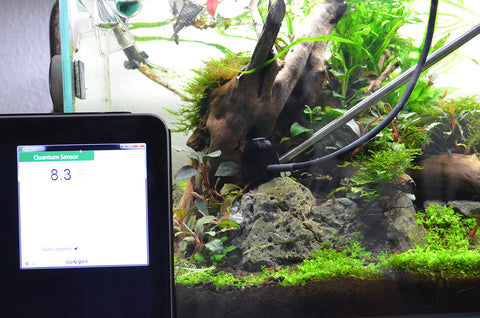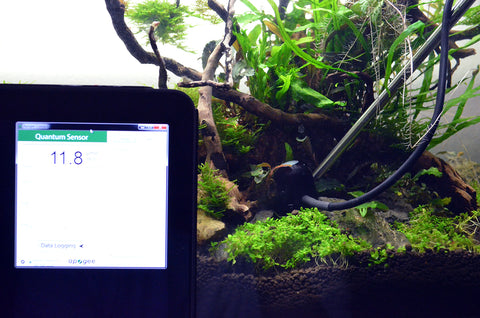How Much Lighting Does Bucephalandra Need?
A common question we get is: what type of lighting do I need for Buce? Is my light fixture enough to grow these guys?
So we decided to run some tests to show everyone!
We got our hands on an Apogee Instruments PAR meter too see just how much PAR is needed to grow Buce. (Thank Greg from SCAPE!)
Quick lighting background:
Watts per gallon used to be a popular method of measuring light intensity when T12 fluorescent tubes were popular. This is no longer feasible and can be misleading since newer fixtures like LEDs have low wattage but higher output. In addition, watts per gallon doesn't take into consideration how tall a tank is. A 20 gallon tank that's 14" tall versus a 20 gallon tank that's 8" tall will have the same watts per gallon but different light intensity if the light fixture sits directly on top of the tank.
A better way to tell how much light you need is PAR. Although its not a perfect method of measuring lighting intensity, PAR readings are far superior to watts per gallon.
What is PAR?
PAR stands for "photosynthetically active radiation" which is basically the range of solar radiation that plants (and other photosynthetic organisms) use to photosynthesize and grow. A PAR meter will measure light in wavelengths ranging from 400nm to 700nm.
There is no set definition on how much PAR is considered low, medium or high light.
For our purposes, we will use the following guide:
15-30 micromols of PAR - Low Light
35-50 micromols of PAR - Medium Light
55+ micromols of PAR - High Light
Back to the question at hand: How much light do I need for Buce?
It is commonly known that Buce have low light requirements and can grow in low tech conditions, similar to Crypts and Anubias. But how much light is low light?
We measured PAR data of Buce grown under different light intensities from two separate tanks. Both tanks receive 8 hours of light and 50% weekly water changes along with estimate index dosing of macros/micros. Both tanks use the same source of de-chlorinated tap water and had similar water parameters at the time of testing: 0 ammonia, 0 nitrites, 20-40ppm nitrates. Both tanks also receive CO2 injection at pretty high levels but we're just using drop checkers with 4dkH solution (not exactly scientific but it will suffice for our purposes).
Tank 1:
Mr Aqua 12G Long
Lighting: Aquatic Life 2x36" T5HO, 6500K bulbs
I put the PAR meter where a few plants of Buce were growing, shaded by the spiderwood. The plants in this set up have been growing for a little over 2 months.
We found that even under 8-10 micromols of PAR, although the plant grows much slower (about 1 leaf per month), it still does quite well. The leaves showed no signs of melt, yellow/brown leaves, or any other deficiencies of any sort. The leaf colors remained light to dark green.
Tank 2:
UNS 60U 20g Tank
Lighting: Twinstar ES600 (24" RGB LED)
This tank is about one month old and the LED we used is considered high light intensity. Some Buce plants began getting hair algae when planted 6-7" below the fixture and receiving 100 micrmols of PAR.
The Buce Thick Brown(pictured below) on the other hand was planted on the edge of the tank and 10-12" away from the LED fixture. Its receiving 80 micromols of PAR with no signs of hair algae. This particular plant was lime green one month ago, but under proper lighting and care, the leaves have darkened up to show some hints of blue and purple.
Conclusion/TL;DR
Bucephalandra is a very low light requirement plant and can grow even in the darker shaded parts of your aquascape. To achieve faster growth and better coloration, expose the plant to higher PAR levels. However, too much light (100 micromols of PAR) can cause algae problems, especially on slow growers like Buce.
Some things to consider which may have played a role in our results
-We used two different light fixtures on two differently sized tank
-CO2 levels were not accurately measured
-The 12g Long has been set up for longer than the 60U 20g so tank conditions are more stable
Tell us - Was this article helpful? Please leave a comment below!
If you have any questions regarding this article, please DM us on Instagram, Facebook, or email support@buceplant.com so we can assist you - @buceplant












Comments
Leave a comment